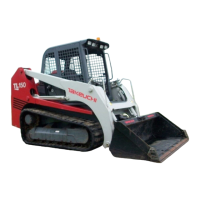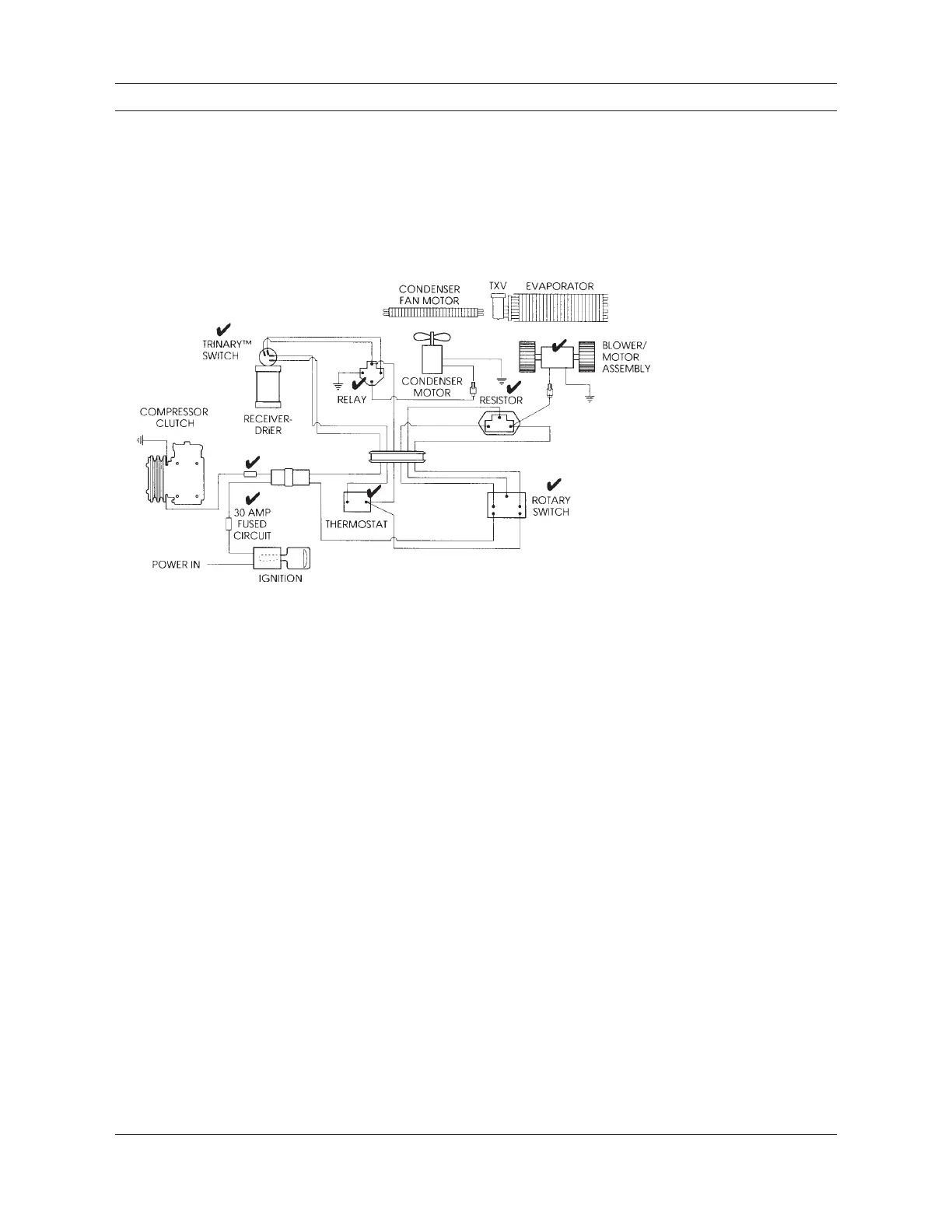III-73
B. Turn the AC System On – This will power the thermostat and clutch.
If it does not come on, use the AC mode switch to check the leads to the
switch. You should be able to hear a “click” from the thermostat and hear
the clutch drive plate “snap” against the clutch pulley. You can not check
thermostat cycling on and off until you do the performance inspection. Fig-
ure 7-5 illustrates a typical AC electrical system and the places you should
inspect.
C. Check Fuses – If there is a failure and you have made sure all con-
nections are clean and tight, you need to check fuses—in-cab as well as
in-line.
D. Check Clutch Engagement – Since you can·t see and may not hear the
clutch engage, get out and look at the clutch. If it·s engaged, you will see
that the drive plate is against the pulley and not slightly spaced from it. If
you are not sure the clutch is engaged, look for the lead wire connector near
the clutch. Break and close that connection. The clutch will disengage and
engage again.
E. Test Blower Speed Operation – Some systems have a common switch
that turns on the air conditioner and powers the blower motor. Test blower
speed operation by adjusting this or the separate blower control switch.
Feeling the air flow from the ducts or note blower sound (speed) changes.
F. Inspect Roof Mounted Condensers – Don·t forget to inspect roof
mounted condensers and AC systems for dirt and debris. Be sure the con-
denser fan(s) are working properly and all parts and electrical connections
are securely fastened. The roof mounted condenser fans may come on when
the system is turned on. Like the thermostat and most clutches, the normal
on-off cycling action can not be observed until the engine is running with
the AC system on.
Inspection & Maintenance
Figure 7-5
The electrical system inspec-
tion points are noted with
check marks () on this
wiring diagram (electrical
schematic).

